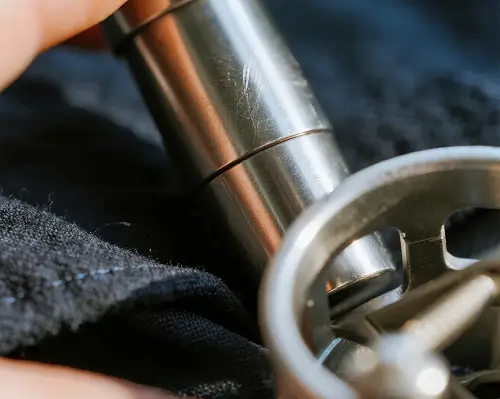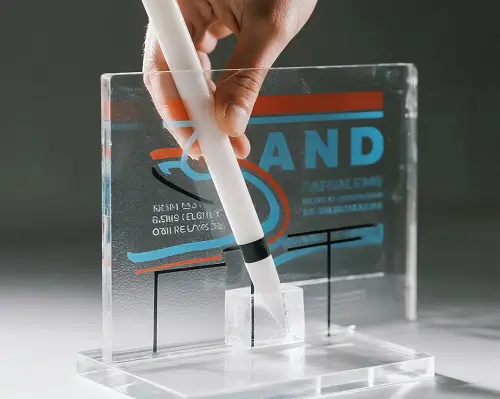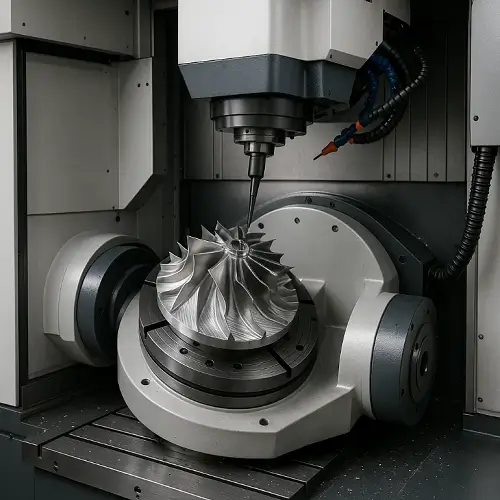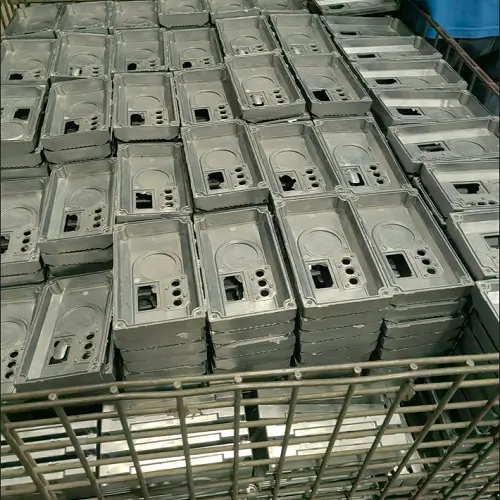In modern metalworking, achieving the desired surface finish is as critical as meeting dimensional tolerances. Components for aerospace, automotive, medical devices, precision instruments, and decorative hardware often require not only structural integrity but also a specific surface appearance and texture. Among the various finishing processes, polishing and buffing are two of the most widely used techniques for refining metallic surfaces. While these terms are sometimes used interchangeably, they refer to distinct processes with different purposes, tools, and outcomes. Understanding the technical differences between polishing and buffing is essential for selecting the right approach to meet functional and aesthetic requirements in metal parts manufacturing.

Polishing: Definition and Process
Polishing is a surface refinement process that removes material through abrasive action to reduce surface roughness and eliminate imperfections such as scratches, machining marks, and oxidation. The process relies on abrasive particles—bonded to a wheel, embedded in a belt, or contained in a slurry—to mechanically cut away a thin layer of material from the workpiece.
In a typical polishing operation, abrasives are applied in stages, starting with coarser grits (e.g., 80–240 grit) to rapidly level the surface, and progressing to finer grits (up to 1,200 or higher) to achieve a smoother finish. Polishing can be performed manually using abrasive papers and compounds, or by machine with rotary polishers, belt sanders, or planetary systems.
Polishing serves two main functions:
Functional improvement – Reducing surface irregularities lowers friction, improves wear resistance, and reduces sites for corrosion initiation.
Preparation for further finishing – Polishing creates a uniform substrate for subsequent treatments such as buffing, electroplating, anodizing, or coating.
In metalworking, polishing is common for stainless steel, aluminum, brass, and other alloys to achieve uniform reflection, remove tool marks from machining, and prepare components for high-luster finishing.
Buffing: Definition and Process
Buffing is a final finishing process aimed at producing a highly reflective, glossy surface—often referred to as a “mirror finish.” Unlike polishing, buffing removes minimal material. Instead, it smooths microscopic peaks and valleys left after polishing and burnishes the surface to enhance light reflectivity.
The process typically employs soft cloth or felt wheels charged with fine abrasive compounds suspended in wax or grease (commonly known as buffing compounds). These compounds may contain aluminum oxide, chromium oxide, or other ultra-fine abrasives, depending on the desired finish and the material being processed.
Buffing is generally performed at higher wheel speeds than polishing, generating light heat that assists in smearing and flattening micro-asperities on the surface. The end result is a surface that can reflect images clearly, with high aesthetic appeal and, in some cases, improved corrosion resistance due to the elimination of micro-crevices.

Technical Differences Between Polishing and Buffing
| Aspect | Polishing | Buffing |
|---|---|---|
| Primary Purpose | Material removal to reduce surface roughness and defects | Enhance gloss and produce a mirror-like appearance |
| Material Removal | Moderate | Minimal |
| Abrasive Type | Fixed abrasives (sandpaper, abrasive belts, grinding wheels) | Loose abrasives in buffing compounds |
| Tooling | Abrasive wheels, belts, discs | Cloth or felt wheels, soft pads |
| Surface Roughness (Ra) | Typically reduced from several micrometers to ~0.2–0.4 µm | Can achieve <0.1 µm Ra |
| Stage in Workflow | Intermediate finishing | Final finishing |
Polishing acts as a corrective step, addressing measurable defects. Buffing, on the other hand, is more of an enhancement stage, maximizing surface reflectivity once structural imperfections have been minimized.
Application Scenarios in Metalworking
In the hardware and machining industry, polishing and buffing are often applied sequentially to meet specific performance and aesthetic targets:
Precision machined components – Polishing removes tool marks and prepares surfaces for buffing to achieve a cosmetic finish.
Decorative hardware – Door handles, architectural trims, and fittings require both processes for corrosion resistance and visual appeal.
Automotive and motorcycle parts – Engine covers, trim pieces, and wheels undergo polishing to remove casting or machining marks, followed by buffing for showroom-grade shine.
Medical instruments – Surgical tools require a smooth, reflective surface for ease of cleaning and sterilization, achieved through multi-stage polishing and buffing.
Material-Specific Considerations
Aluminum and Aluminum Alloys
Aluminum is soft and prone to scratching, requiring gentle polishing with non-ferrous-specific abrasives. Buffing must be controlled to avoid excessive heat that can cause smearing.
Stainless Steel
High hardness and work-hardening tendencies demand aggressive polishing with progressively finer abrasives. Buffing compounds with chromium oxide are preferred for achieving a deep, bright luster.
Brass and Copper
Both metals are relatively soft and tarnish easily. Polishing removes oxidation, while buffing enhances the warm metallic sheen. A protective coating may be applied after buffing to prolong appearance.
Carbon and Tool Steels
Polishing removes oxide scale from heat treatment. Buffing is optional unless a reflective finish is desired, but care must be taken to avoid rounding sharp edges.
Recommended Workflow in Metalworking
Initial Polishing
Remove machining marks, weld spatter, or casting imperfections.
Use coarse to medium grit abrasives for leveling.
Fine Polishing
Transition to fine grit abrasives for a near-smooth finish.
Prepare the surface for buffing by eliminating visible scratches.
Buffing
Use cloth or felt wheels charged with the appropriate buffing compound.
Apply light pressure to avoid heat-induced damage.
Achieve uniform gloss across the surface.
Final Inspection
Evaluate surface finish visually and, if needed, with profilometers.
Verify that surface quality meets functional and aesthetic requirements.
Common Types of Polishing in Metalworking
In metalworking, polishing methods are selected based on the material type, required surface quality, and production scale. While the principles remain consistent—abrasive refinement followed by optional buffing—the techniques vary significantly for different metals and applications. Below are the most common polishing types encountered in the hardware and machining industries:
Metal Polishing
A general term for polishing processes applied to metallic components such as steel, aluminum, brass, and copper. Metal polishing typically involves progressive abrasive steps to remove machining marks, oxidation, and casting imperfections. It is the standard preparatory stage before buffing for both industrial and decorative parts.
Aluminum Polishing
Aluminum and its alloys require specialized polishing techniques due to their softness and tendency to smear under heat. Non-ferrous-specific abrasives and controlled pressure are essential to avoid surface deformation. Final stages often involve fine buffing to enhance brightness without damaging the substrate.
Stainless Steel Polishing
Stainless steel polishing involves removing machining lines and achieving a uniform grain or reflective finish. Due to the metal’s hardness and work-hardening properties, progressively finer abrasives are necessary. Chromium oxide-based buffing compounds are commonly used to produce a deep, mirror-like luster.
Mirror Polishing
A high-precision polishing technique that results in a perfectly reflective surface, often with surface roughness (Ra) values below 0.1 µm. Mirror polishing requires meticulous abrasive progression and controlled buffing to eliminate all visible scratches. This finish is frequently applied to decorative hardware, molds, and precision instruments.
Weld Polishing
Used to remove weld beads, spatter, and heat discoloration from welded joints. The process typically starts with aggressive abrasive removal, followed by fine polishing to blend the weld area with the surrounding surface. Buffing may be applied as a final step for aesthetic improvement.
These categories overlap in practice, as many parts require a combination of methods to achieve both functional and aesthetic goals. For example, a stainless steel handle may undergo weld polishing, general stainless steel polishing, and finally mirror polishing to meet customer specifications.
Summary Table: Polishing vs Buffing in Metalworking
| Step | Process | Tools & Materials | Result |
|---|---|---|---|
| 1 | Coarse Polishing | Abrasive belts, grinding wheels | Remove major defects, flatten surface |
| 2 | Fine Polishing | Fine abrasive belts, papers | Smooth surface, prepare for buffing |
| 3 | Buffing | Cloth/felt wheels, buffing compounds | High-gloss, mirror-like finish |
Conclusion
Polishing and buffing are complementary finishing processes in metalworking. Polishing functions as an abrasive refinement step to remove measurable surface defects, while buffing serves as a burnishing stage that enhances visual appearance and, in some cases, improves surface performance. In hardware manufacturing, machining, and custom fabrication, integrating both processes ensures that components meet both technical and aesthetic specifications.
JeekRapid handles both precision polishing and high-gloss buffing alongside complete machining and finishing work. Every part is processed for consistent quality and reliable surface integrity. For job inquiries or to get a quote, reach out to JeekRapid anytime.


